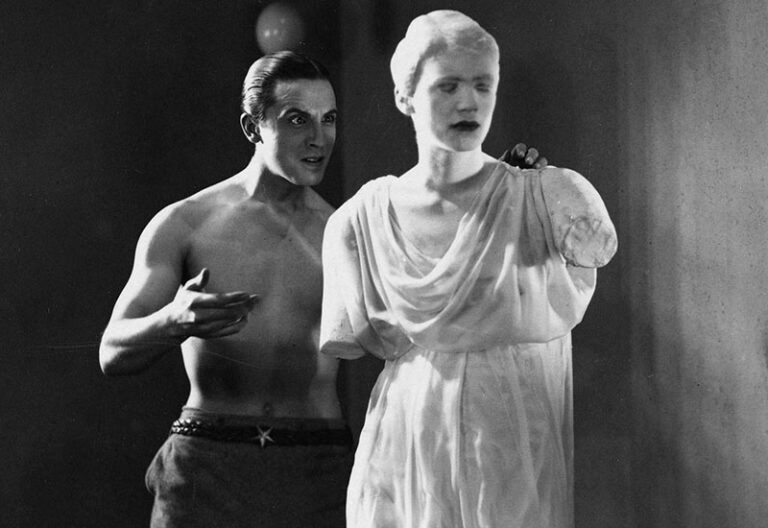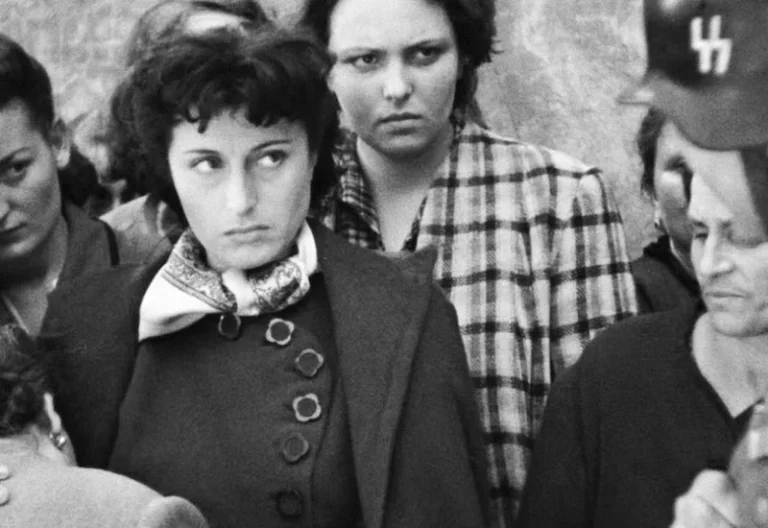italian futurism
est. early 1910s – 1919
Long before the now-famous Italian Neorealist movement, Italian Futurism arose as an avant-garde force in the early 20th century. This movement was renowned for its radical departure from traditional artistic forms, embracing modernity, technology, and dynamic movement. While most commonly associated with visual arts and literature, Italian Futurism also made significant, though less widely recognized, contributions to cinema.
Published by: CinemaWaves Team | Filed Under: Film Movements
origins of the italian futurism
Italian Futurism in cinema was born out of the broader Futurist movement, which was officially launched with the publication of the Futurist Manifesto by Italian poet Filippo Tommaso Marinetti in 1909. The manifest celebrated the dynamism of modern technology, the beauty of speed, and the transformative power of industrialization, while rejecting the past and all forms of traditionalism.
The ideals of Futurism quickly spread across various art forms, including literature, painting, sculpture, architecture, and theater. The movement sought to break free from the constraints of conventional aesthetics and to reflect the rapidly changing world through new, innovative means. Cinema, a relatively new art form at the time, was seen as a perfect medium for expressing Futurist ideas due to its inherent potential for depicting movement and modernity.
Futurist cinema started around the year 1915, driven by a desire to move from the classical narrative and stylistic elements of contemporary films at the time. Futurists filmmakers pursued to create a new cinematic language that mirrored their enthusiasm for innovation.

Characteristics of
Italian Futurism in cinema
Dynamic movement: Futurist films emphasized speed, motion, and the dynamic nature of modern life, using rapid editing techniques, fast-paced action sequences, and kinetic compositions to convey a sense of relentless energy.
Technological embrace: The movement celebrated technology and industrialization, frequently depicting machines, factories, and urban environments as symbols of progress and modernity.
Abstract and non-linear narratives: Rejecting traditional storytelling, Futurist films featured fragmented and non-linear narratives, focusing more on visual and emotional impact than coherent plot development.
Visual innovation: Futurist filmmakers experimented with visual effects, unconventional camera angles, superimpositions (the act of putting one image on top of another so that the two can be seen combined), and other techniques to create visually striking and abstract compositions.
Anti-past: Consistent with the broader Futurist movement ethos, these films often depicted a break from historical and classical influences, favoring a forward-looking, futuristic aesthetic.

Important Filmmakers and Films
Though the Futurist cinema movement was relatively short-lived and produced fewer works compared to other art forms within Futurism, several key figures and films stand out:
Anton Giulio Bragaglia was one of the most prominent figures in Futurist cinema, known for his experimental approach and innovative use of film as an artistic medium. His film “Thais” from 1917 is considered to be one of the first Futurist films. Thais is notable for its bold visual style, incorporating avant-garde set designs and special effects. The film’s narrative is fragmented and symbolic, reflecting the Futurist fascination with non-linear storytelling and abstract imagery. Today this film is the sole surviving Italian futurist film.
Brothers Arnaldo Ginna and Bruno Corra were pioneers in abstract film, creating some of the earliest examples of abstract cinema. Their films, now mostly lost, were known for their vibrant use of color and abstract forms, achieved through hand-painted frames and experimental techniques. Film, “Vita Futurista” (1916), a collaborative effort featuring various Futurist artists, is a series of vignettes that showcase the movement’s aesthetic principles, including dynamic movement, technological themes, and anti-traditional narratives.
Legacy and Influence of Italian Futurism
Despite the initial enthusiasm and innovative approaches, Italian Futurist cinema faced several challenges that hindered its long-term development. The outbreak of World War I disrupted artistic activities, and the post-war economic and political climate in Italy made it difficult for avant-garde projects to gain financial support. Additionally, the rise of Fascism in the 1920s, with which some Futurists initially aligned, led to the co-option and dilution of Futurist ideals.
Although short-lived, the impact of Italian Futurist cinema was significant. The movement’s radical ideas about the role of film as an art form influenced later avant-garde and experimental filmmakers, as well as some narrative filmmakers (examples can be seen in the dreamlike visions of certain films by Alfred Hitchcock). The emphasis on visual abstraction, dynamic movement, and technological themes can be seen in the works of later film movements such as German Expressionism, and art movements like Dadaism, Surrealism, and the Bauhaus school.
Futurism’s celebration of modernity and technology also found echoes in later genres, such as science fiction and cyberpunk, which similarly explore the relationship between humanity and technology.
Refer to the Listed Films for the recommended works associated with the movement. Also, check out the rest of the Film Movements on our website.
Surrealist cinema originated in the 1920s as an extension of the broader Surrealist art movement, which itself grew out of the Dada movement that arose during and after World…
German Expressionism stands out as one of the most distinctive styles in the era of silent film. Expressionism, as an artistic movement, originally emerged in poetry and the…
In the aftermath of World War II, Italy was a country in ruins, both physically and economically. Amidst the rubble and despair, a group of visionary filmmakers arose to…
Experimental film, referred to as avantgarde cinema, is a genre that defies traditional storytelling and filmmaking techniques. It explores the boundaries of the medium, prioritizing…
Silent films, originating in the late 19th century, represent the foundation of modern cinema. Characterized by their lack of synchronized sound, these films relied on visual storytelling…
Arthouse film refers to a category of cinema known for its artistic and experimental nature, usually produced outside the major film studio system. These films prioritize artistic…






